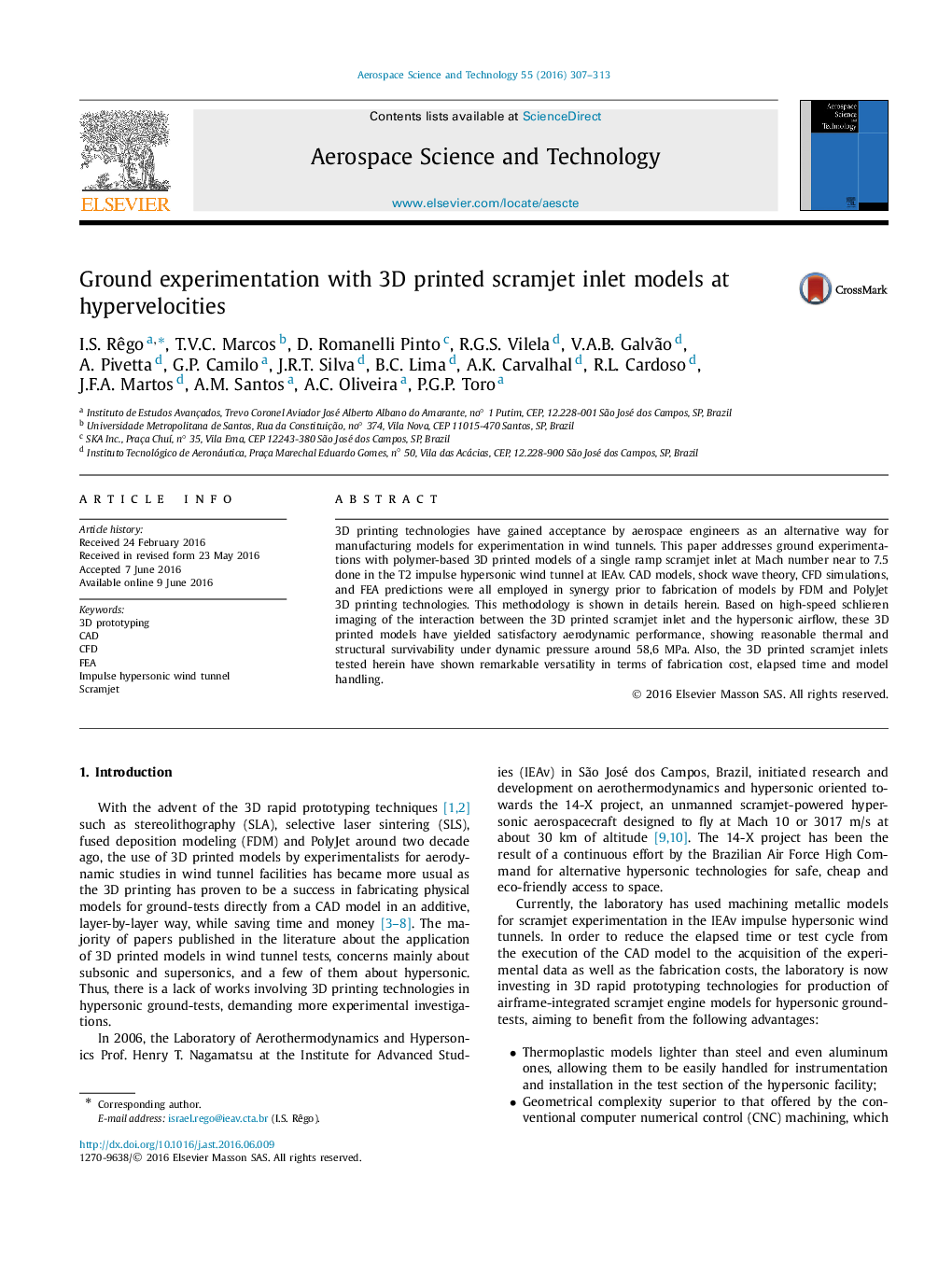| Article ID | Journal | Published Year | Pages | File Type |
|---|---|---|---|---|
| 1717562 | Aerospace Science and Technology | 2016 | 7 Pages |
3D printing technologies have gained acceptance by aerospace engineers as an alternative way for manufacturing models for experimentation in wind tunnels. This paper addresses ground experimentations with polymer-based 3D printed models of a single ramp scramjet inlet at Mach number near to 7.5 done in the T2 impulse hypersonic wind tunnel at IEAv. CAD models, shock wave theory, CFD simulations, and FEA predictions were all employed in synergy prior to fabrication of models by FDM and PolyJet 3D printing technologies. This methodology is shown in details herein. Based on high-speed schlieren imaging of the interaction between the 3D printed scramjet inlet and the hypersonic airflow, these 3D printed models have yielded satisfactory aerodynamic performance, showing reasonable thermal and structural survivability under dynamic pressure around 58,6 MPa. Also, the 3D printed scramjet inlets tested herein have shown remarkable versatility in terms of fabrication cost, elapsed time and model handling.
